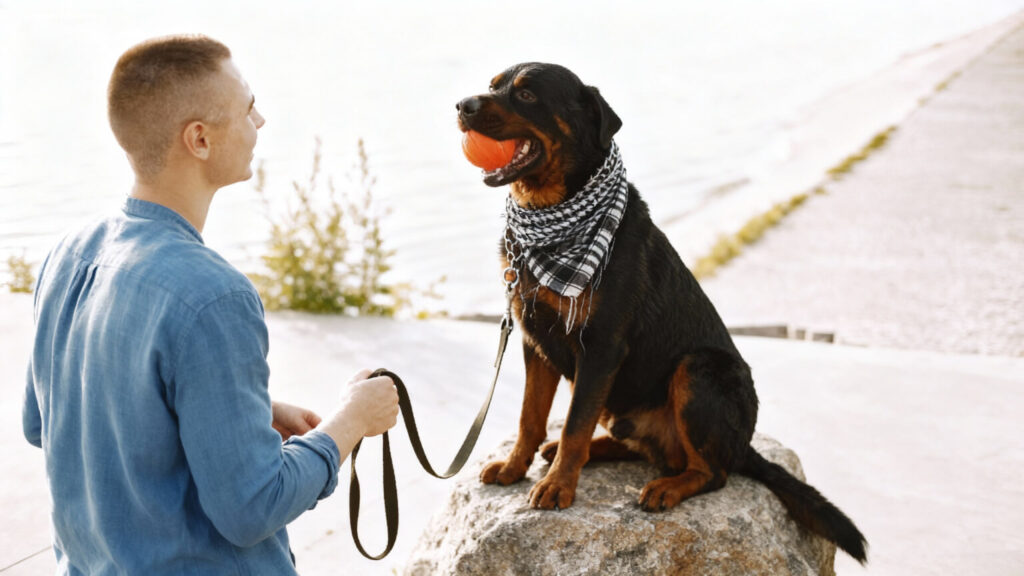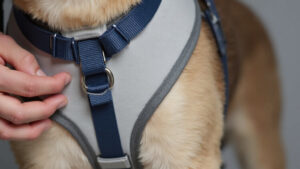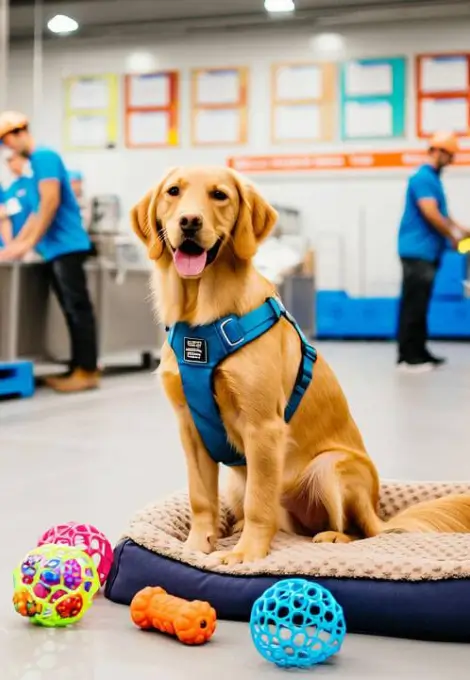How to Transition from Collar to Harness Without Your Dog Freaking Out?
Walking your dog on a snowy Toronto street or a rainy London path can be a little pleasure in life – until your dog tugs, coughs or panics. Many first-time dog owners replace their collars with harnesses for better control and comfort, but not every dog greets this change by wagging its tail. If your dog becomes stiff, resistant or runs away when you put a new harness on it.
Recent surveys show that over 70% of pet owners exhibit resistance or anxiety when putting harness on their dogs for the first time. Unfamiliar feelings, tension and new walking power may lead to pulling, freezing, and even attempts to escape.
What’s the good news? This 7-day training program uses soft reflective dog harness, rewards and positive reinforcement – helping first-time owners teach their dogs to like their new equipment rather than be afraid of it.

Why change? The benefits of safety dog harness over collars
Collars may seem simple, but they focus the pressure on the dog’s neck – especially when pulling or pouncing on the dog. The leading safety dog seat belt evenly distributes pressure over the chest and shoulders, protecting the fragile airways and allowing you to have better control.
The main benefits of safety dog harness:
- Enhancing safety: Preventing suffocation and tracheal damage is particularly important for small dogs and short-headed dogs such as French Bulldogs.
- Reflective protection: In Canada or Europe, many modern designs, such as reflective dog harness, can increase visibility when taking a walk in the dark winter.
- Comfort and control: Reduce the tendency to pull, distribute the tension throughout the trunk, and make walking more stable.
- More suitable for puppies: In early traction training, gentle support can prevent fear and discomfort.
For dog owners who are encountering the choice between “Y-shaped harness and H-shaped harness” for the first time, experts usually recommend using the Y-shaped safety harness, as its design is more in line with the natural posture of dogs during movement and can also provide them with a more comfortable wearing experience.
For this reason, many pet harness brands, including Wingtupet, also recommend using this type of safety belt during daily walks. Its Y-shaped reflective design conforms to the physiological structure of dogs, not only distributing pressure but also allowing the shoulders to move freely without restrictions. It is an especially suitable choice for dogs that are using a leash for the first time or are more sensitive.
Choose the correct harness
Not all harnesses are the same. For beginners, the ideal safety dog gear should combine comfort, durability and reflectivity.
The following are the contents that need to be checked
- Suitability and adjustability: Measure your dog’s chest circumference. A good harness is comfortable to sit on but not tight – you should place two fingers between the harness and the fur.
- Material comfort: Look for soft neoprene or mesh fillers to prevent friction.
- Reflection details: Crucial for night walks or low-light environments.
- Weather resistance: For Canada and Europe, the waterproof or outdoor clothing safety dog strap design keeps puppies comfortable in snow or drizzle.
As a professional dog harness manufacturer, Wingtupet offers daily pet owners and wholesale supply distributors a choice of breathable, anti-escape double D-rings and customizable brands. Each product emphasizes comfort, visibility and safety, reflecting the growing trend in Canada, Europe and other regions.

7-day Transition Plan: A Step-by-step Guide
Here is a simple, evidence-based 7-day positive reinforcement method for the transition from a collar to a harness.
Day 1: A stress-free self-introduction
Let your dog smell the soft reflective dog harness. Don’t try to wear it – reward your curiosity with hospitality. No coercion, no pressure – just exploration.
Day 2: Contact and familiarization
Gently place the harness on the dog’s back for a few seconds, then remove it. Combine this experience with rewards and praise to reduce anxiety.
Day 3: Local wear and tear
Fasten your seat belt gently and do not tighten it. Let your dog wear it for 1-2 minutes when it is distracted by toys or chewing objects.
Day 4: Get dressed indoors
Adjust the belt to be comfortable and let your dog move freely indoors.
Day 5: Introduction to the rope
Fasten your belt and try to practice standing calmly or walking around the living room first. Reward relaxed body language.
Day 6: Short indoor walks
Start taking walks indoors or in the backyard. If your dog starts pulling, stop, then readjust the direction and try again.
Day 7: Outdoor appearance
Go for a 5 to 10-minute walk. Keep giving positive rewards. Use the reflective function to enhance visibility and safety.
Other tips
Even with a reliable plan, some dogs still need more time to adapt. This is quite normal.
Common mistakes to avoid
For instance, if your dog refuses during the movement, take a step back. For instance, if there is a scratch or bite on the harness, it might be that the harness is too tight or irritating. We can stop to check the fit and materials.
By carefully observing the dog’s body language. If resistance persists, consult a veterinarian or coach to rule out pain or past trauma.
Conclusion
The shift from collars to straps is not merely a trend – it represents a safer and more friendly walking habit. With the right equipment, patience and reward training, even nervous dogs can learn to like their harnesses.
Whether you are a first-time pet owner or a pet business purchasing high-quality products, as a leader in the manufacturing of safe pet supplies, Wingtupet offers customizable safety dog harness solutions and is trusted by international partners.
Related Posts
Top Chinese Factories Your Partner for Quality OEM/ODM
Tips:







